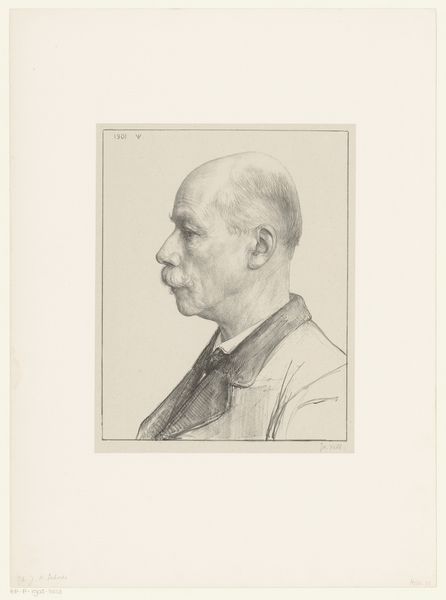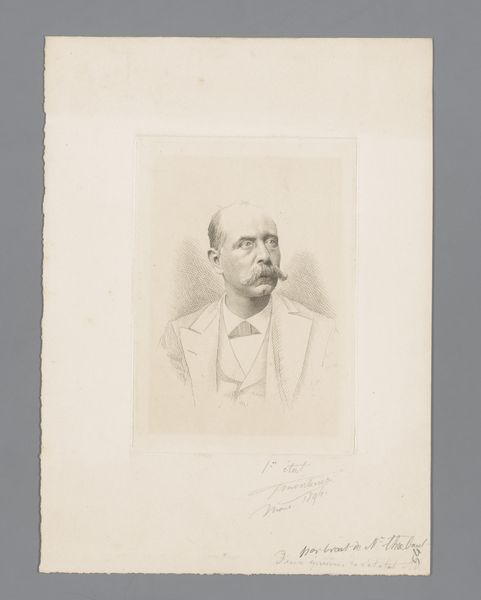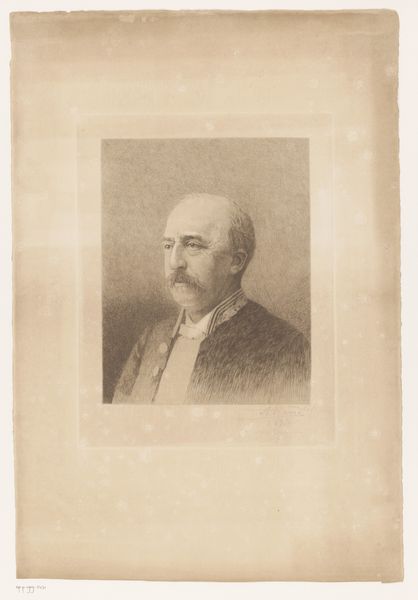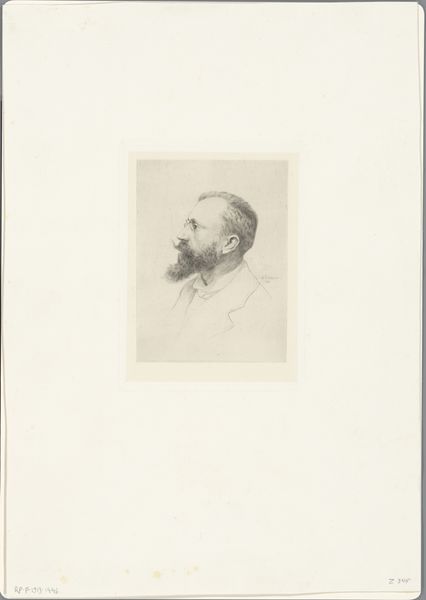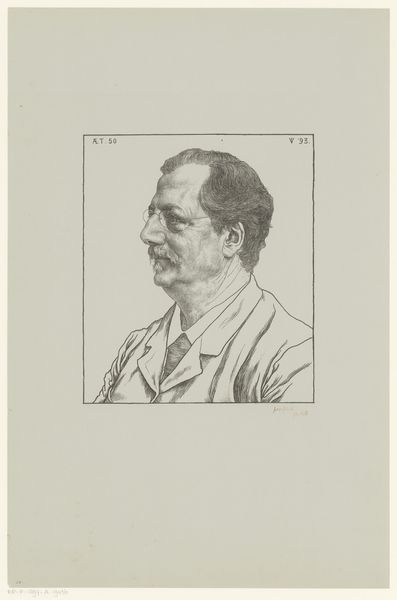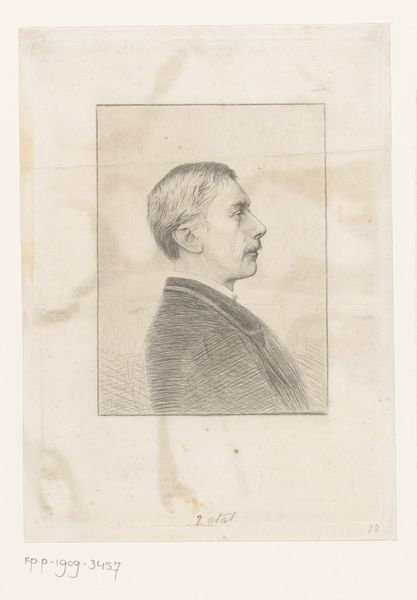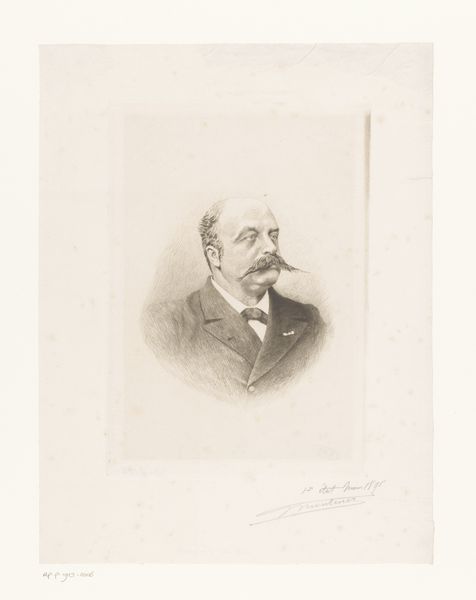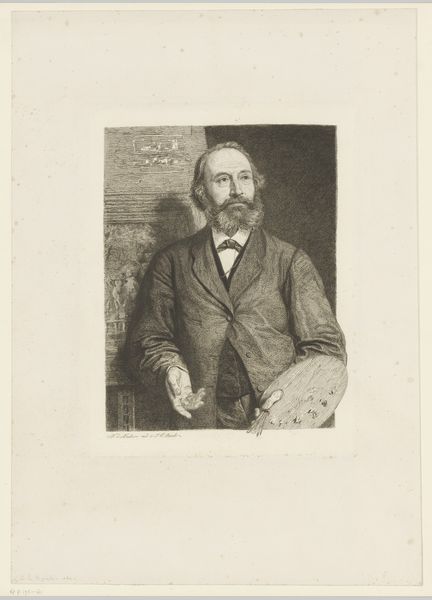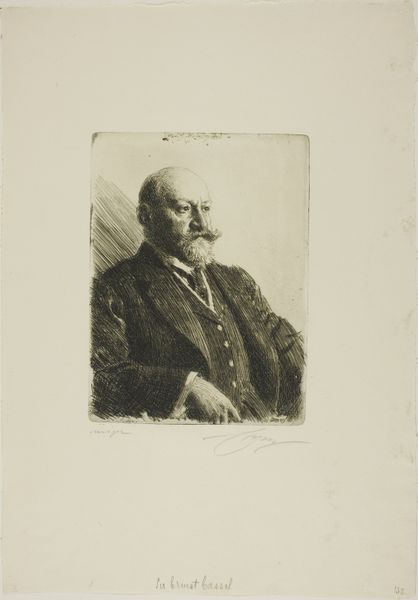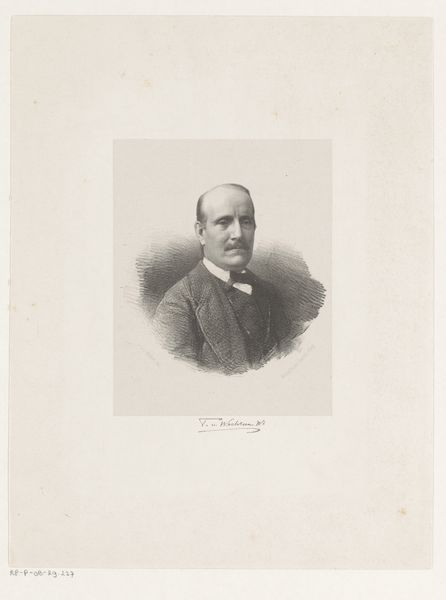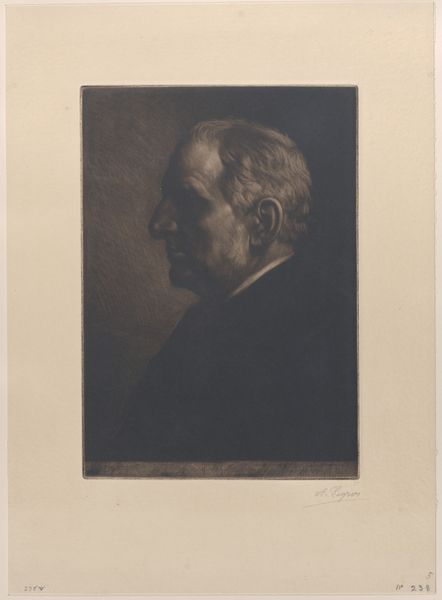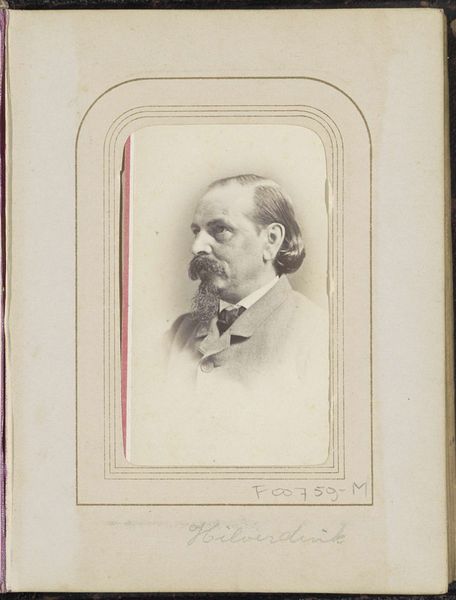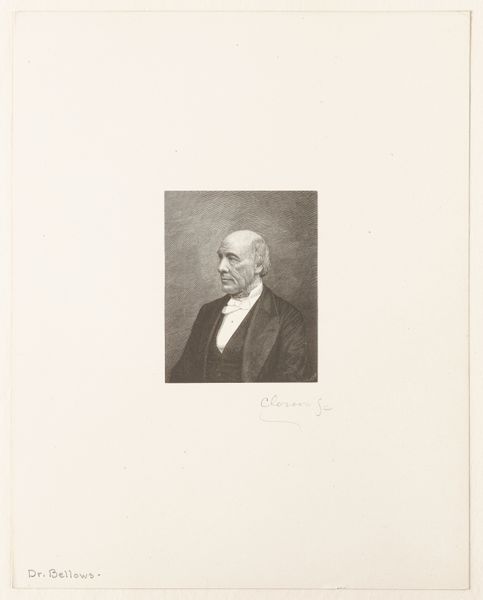
drawing, pencil
#
portrait
#
pencil drawn
#
drawing
#
pencil sketch
#
pencil drawing
#
pencil
#
portrait drawing
#
modernism
#
realism
Dimensions: height 475 mm, width 350 mm
Copyright: Rijks Museum: Open Domain
Editor: This is Jan Veth's pencil portrait of Diederik Johannes Korteweg from 1906, here at the Rijksmuseum. I find the rendering style really captivating—it's incredibly precise. How would you interpret the artwork through a formal lens? Curator: Certainly. Immediately apparent is Veth's command of line and value to sculpt form. Notice the hatching and cross-hatching used to create subtle gradations of light and shadow, especially around the face. This painstaking technique imbues the subject with a palpable sense of volume. What is also of note is the crispness with which the artist depicts the sitter's coat against the very minimally detailed and comparatively ill-defined background. What compositional relationships can you observe there? Editor: That makes sense. I guess, I had not focused on that – to me it seems a choice to move the background to being 'merely suggested.' Curator: Indeed. Now, focusing on the line work further, consider the intentionality behind the density of lines used to define Korteweg's features. Note how they are much denser around the eyes and along the cheekbone. Editor: Ah, yes, you're right! It directs the eye and enhances the three-dimensionality. So, it is through contrast that our attention is driven to those spots... Curator: Precisely. Veth manipulates formal elements to achieve an aesthetic impact, prompting questions of representation and interpretation through his careful and conscious handling of form, value, and line. Editor: I see how isolating those individual aspects allows us to unpack all of that meaning. Thanks, that was so useful. Curator: My pleasure. A study in the art of drawing!
Comments
No comments
Be the first to comment and join the conversation on the ultimate creative platform.
